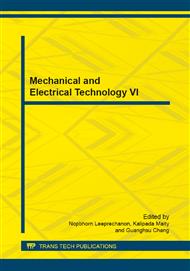p.3
p.8
p.13
p.18
p.23
p.28
p.33
p.38
p.44
On the Use of Composite-Steel Joint for Semi-Monocoque Frame Design
Abstract:
The design of semi-monocoque frame by using the composite-steel joint is considered in this paper. The frame is designed with weight less than 30kg and torsional stiffness more than 1200 Nm/deg. In order to design the semi-monocoque frame, the analysis of the composite-steel joint has to be clearly investigated. Therefore, the stress analysis of composite-steel joint is performed and then the frame is designed. The double lab joint with two holes is tested and verified by the experiments. The carbon-fiber fabric laminated with the KEVLAR fabric composite laminate is used for composite part. From experiments, the joint’s strength can be increased by using the eccentric holes. Therefore, in order to meet the requirement of the SAE rules; load capacity more than 30 kN, the eccentric hole double lap joint is numerically designed and applied to semi-monocoque frame. The joint has strength of 32 kN and can be used in frame design. The semi-monocoque frame is designed and analyzed by finite element analysis. The maximum stress at maximum load is 208 MPa which is less than the yield strength of the materials so it can withstand the loads, the mass is 29.6kg, and the torsional stiffness of the frame is 1408 Nm/degree. Therefore, the semi-monocoque frame can be successfully designed.
Info:
Periodical:
Pages:
23-27
Citation:
Online since:
August 2014
Price:
Сopyright:
© 2014 Trans Tech Publications Ltd. All Rights Reserved
Share:
Citation:


